|
In addition, remaining
with the Dluskis meant participating regularly in the active Polish
exile community in Paris. Marie's father warned her that doing
so might jeopardize her career prospects at home or even the lives
of relatives there. Thus after a few months Marie moved to the
Latin Quarter, the artists' and students' neighborhood close to
the university.
|
|
Her living arrangements
were basic. Stories from these years tell how she kept herself
warm during the winter months by wearing every piece of clothing
she owned, and how she fainted from hunger because she was too
absorbed in study to eat. But even if Bronya had to come to her
aid from time to time, living alone enabled Marie to focus seriously
on her studies.
“...my
situation was not exceptional; it was the familiar experience
of many of the Polish students whom I knew....”
|
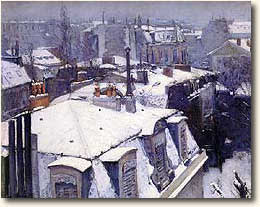 |
Paris rooftops, painting by Gustave Caillebotte
[More]
|
|
 HE HAD A LOT OF
CATCHING UP to do. Marie realized quickly that her fears of
being insufficiently prepared were accurate. Neither her math and
science background nor her proficiency in technical French equaled
that of her fellow students. Refusing to lose heart, she determined
to overcome these shortcomings through diligent work.
HE HAD A LOT OF
CATCHING UP to do. Marie realized quickly that her fears of
being insufficiently prepared were accurate. Neither her math and
science background nor her proficiency in technical French equaled
that of her fellow students. Refusing to lose heart, she determined
to overcome these shortcomings through diligent work. |
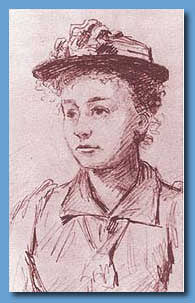 |
| Another Polish student in Paris drew this
portrait of Marie in 1892, after she had been enrolled at
the Sorbonne for some months. Although at first she spent
some time with other Polish students to help overcome homesickness,
she soon had to devote all her time to her studies. (Photo
ACJC) |
|
The diligence paid
off. Marie finished first in her master's degree physics course
in the summer of 1893 and second in math the following year. Lack
of money had stood in the way of her undertaking the math degree,
but senior French scientists recognized her abilities and pulled
some strings. She was awarded a scholarship earmarked for an outstanding
Polish student. Before completing the math degree she was also
commissioned by the Society for the Encouragement of National
Industry to do a study, relating magnetic properties of different
steels to their chemical composition. She needed to find a lab
where she could do the work.
 Love
and Marriage
Love
and Marriage
 HE SEARCH FOR
LAB SPACE led
to a fateful introduction. In the spring of 1894, Marie Sklodowska
mentioned her need for a lab to a Polish physicist of her acquaintance.
It occurred to him that his colleague Pierre
Curie might be able to assist her. Curie, who had done pioneering
research on magnetism, was laboratory chief at the Municipal School
of Industrial Physics and Chemistry in Paris. Unaware of how inadequate
Pierre's own lab facilities were, the professor suggested that
perhaps Pierre could find room there for Marie to work. The meeting
between Curie and Sklodowska would change not only their individual
lives but also the course of science.
HE SEARCH FOR
LAB SPACE led
to a fateful introduction. In the spring of 1894, Marie Sklodowska
mentioned her need for a lab to a Polish physicist of her acquaintance.
It occurred to him that his colleague Pierre
Curie might be able to assist her. Curie, who had done pioneering
research on magnetism, was laboratory chief at the Municipal School
of Industrial Physics and Chemistry in Paris. Unaware of how inadequate
Pierre's own lab facilities were, the professor suggested that
perhaps Pierre could find room there for Marie to work. The meeting
between Curie and Sklodowska would change not only their individual
lives but also the course of science.
|
“I noticed the grave and gentle expression
of his face, as well as a certain abandon in his attitude, suggesting
the dreamer absorbed in his reflections.”
|
|
Marie would eventually
find rudimentary lab space at the Municipal School. Meanwhile
her relationship with Curie was growing from mutual respect to
love. Her senior by about a decade, Pierre had all but given up
on love after the death of a close woman companion some 15 years
earlier. The women he had met since had shown no interest in science,
his life's passion. In Marie, however, he found an equal with
a comparable devotion to science.
 OLAND
STILL BECKONED HER BACK. After her success in her math exam
in the summer of 1894, Marie returned there for a vacation, uncertain
whether she would return to France. Pierre's heartfelt letters
helped convince her to pursue her doctorate in Paris. OLAND
STILL BECKONED HER BACK. After her success in her math exam
in the summer of 1894, Marie returned there for a vacation, uncertain
whether she would return to France. Pierre's heartfelt letters
helped convince her to pursue her doctorate in Paris.
|
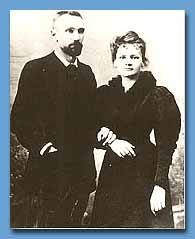 |
|
Marie hesitated before agreeing to marry
Pierre Curie, because such a decision
“meant abandoning my country and my family.” (Photo
ACJC)
READ
Curie's words
|
|
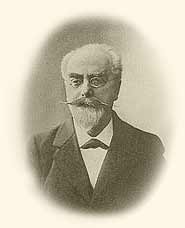 |
| Gabriel Lippmann, Marie Curie's thesis
advisor, did early studies in a field in which Pierre
Curie and his brother were pioneers: electrical effects
in crystals. A pillar of the French tradition of patronage,
Lippmann let Marie use his laboratory for her thesis
work and helped her find other sources of support. |
|
“Our work drew us closer and closer, until we were
both convinced that neither of us could find a better
life companion.”
Marie was determined
not only to get her own doctorate but to see to it that Pierre
received one as well. Although Pierre had done important scientific
research in more than one field over the past 15 years, he
had never completed a doctorate (in France the process consumed
even more time than it did in the U.S. or U.K.). Marie insisted
now that he write up his research on magnetism. In March 1895
he was awarded the degree. At the Municipal School Pierre
was promoted to a professorship. The honor and the higher
salary were offset by increased teaching duties without any
improvement in lab space. |
|
|
In a simple civil
ceremony in July 1895, they became husband and wife. Neither wanted
a religious service. Marie had lost her faith when her devout
Roman Catholic mother died young, and Pierre was the son of non-practicing
Protestants. Nor did they exchange rings. Instead of a bridal
gown Marie wore a dark blue outfit, which for years after was
a serviceable lab garment.
|
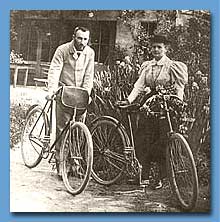 |
The Curies' honeymoon trip was a tour of
France on bicycles purchased with a wedding gift. (Photo ACJC)
Another view |
|
|

